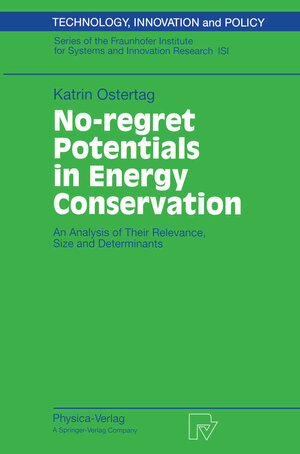
×
![Buchcover ISBN 9783642573422]()
No-regret Potentials in Energy Conservation
An Analysis of Their Relevance, Size and Determinants
von Katrin Ostertag(2) Do existing estimates of the no-regret potential stand up to are-evaluation within this framework? As a result of this analysis the size of previous estimates for no-regret potentials may be modified - in terms ofenergy savings or in financial terms. On the basis of these findings, we will approach the overriding third research question: (3) How large is the no-regret potential and what determines its size? The following chapter will provide a fuller account of the debate on no-regret potentials. This will be complemented by a detailed theory-based definition of no regret potentials in Chapter 2. The thesis will focus mostly on the micro-level of analysis. But we will also address the implications ofour findings for the analysis ofenergy saving measures and policies at more aggregate levels, notably within a feasibility study for adapting a model which represents the level of the national economy. The debate on no-regret potentials 1 origin, context, issues The term „no-regret potentials“ was coined during the debate on climate change. It designates opportunities for the reduction of greenhouse gas (GHG) emissions „. . . that are worth undertaking whether or not there are climate-related reasons for doing so. “ (IPCC 1996, p. 271). In the IPCC's Third Assessment Report (TAR), no regret potentials are increasingly equated with GHG emission reduction potentials at negative (net) costs (lPCC 2001, p. 21).



